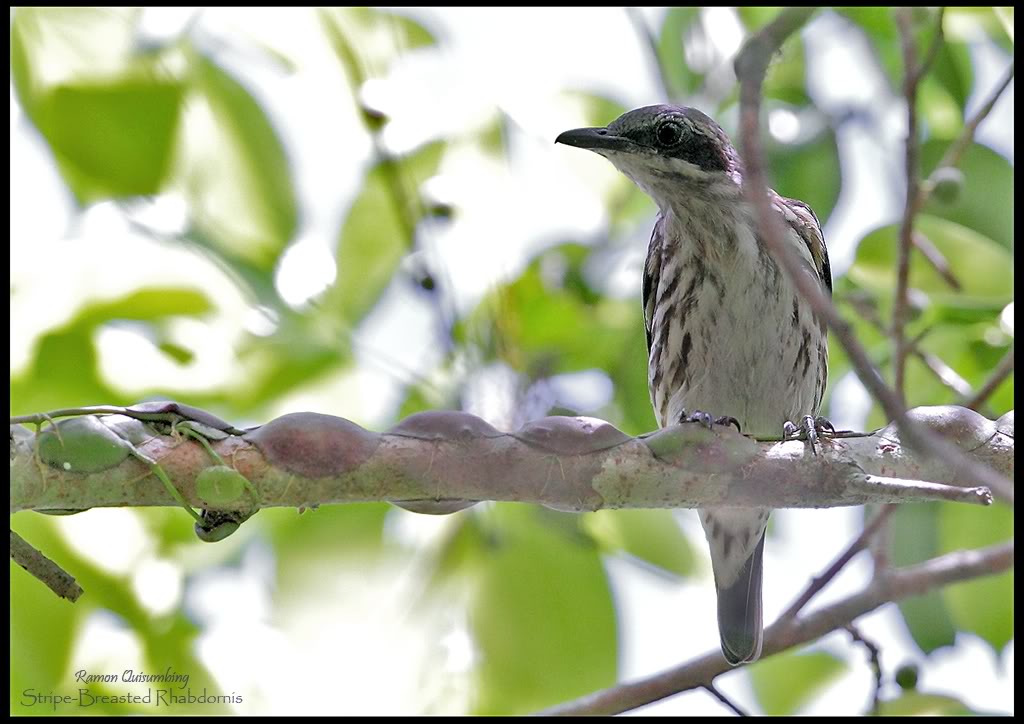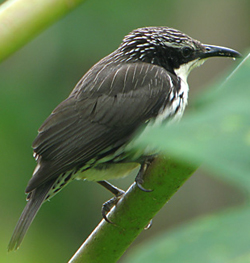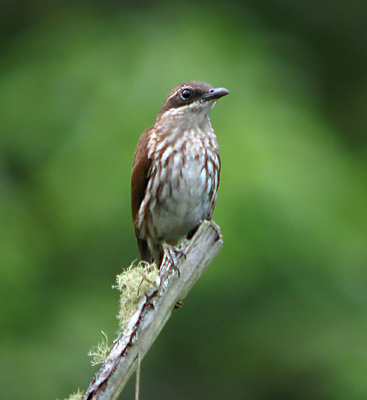
Rhabdornis inornatus
TAXONOMY
Rhabdornis inornatus Ogilvie-Grant, 1896.
OTHER COMMON NAMES
English: Plain-headed rhabdornis, plain-headed creeper; French:
Rhabdornis б tкte brune; German: Braunkopf-Rhabdornis;
Spanish: Trepador Filipino de Cabeza Lisa.
PHYSICAL CHARACTERISTICS
These birds are 6.3 in (16 cm) long, and weigh about 3 oz (86 g).
As with its bigger relative, the sexes show little in the way of
color differences. Both sexes have a black bill, dark brown eyes,
and legs ranging from grayish yellow to horn. The upperparts
are medium-brown, while the crown, tail, and primaries are
darker brown. The mask is dark brown, bordered above and
below by white. The throat is grayish white and the center
of the belly is white, while the breast, flanks, and undertail
feathers are streaked white and brown. The female has lighter
brown upperparts and mask.
DISTRIBUTION
Endemic to the islands of Samar, Basilan, Leyte, Mindanao,
Negros, and Panay.
HABITAT
Prefers tropical forest over 2,600 ft (800 m) above sea level,
but will sometimes range into lower levels.
BEHAVIOR
BEHAVIOR
is similar to that of the stripe-headed rhabdornis, but
stripe-breasteds prefer smaller foraging flocks of 4–5 individuals.
The birds will sometimes roost in large numbers in the isolated
canopy of a group of trees in a clearing. The call is a highpitched
note of “tzit” repeated often, sometimes in a rapid
staccato.
FEEDING ECOLOGY AND DIET
Forages in middle to higher altitude forests, but may range
lower. Its diet covers a wide selection of insects and fruits. On
Mindanao, field researchers saw one individual snag and eat a
tree frog. In eastern Mindanao, residents witnessed over 100
Rhabdornis inornatus individuals gathering in a great flock to
flycatch among seasonal swarms of flying insects.
REPRODUCTIVE BIOLOGY
Nests in April; enlarged gonads in March and April. Eggs not
described.
CONSERVATION STATUS
Not threatened.
SIGNIFICANCE TO HUMANS
None known.
Photo Gallery of - Stripe-breasted rhabdornis




 Animalia Life
Animalia Life